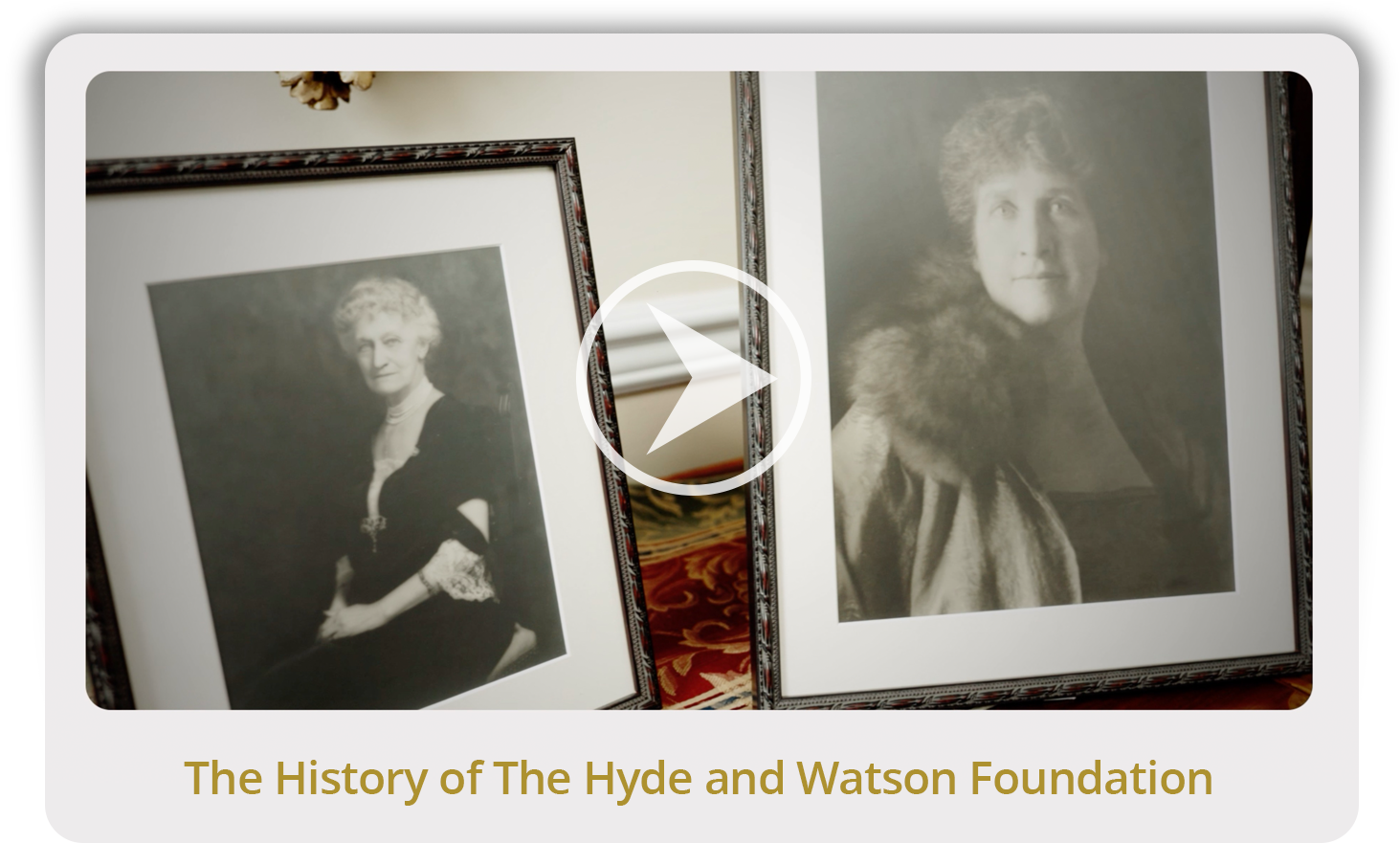The Hyde and Watson Foundation was incorporated on January 14, 1983, through the consolidation of The Lillia Babbitt Hyde Foundation and The John Jay and Eliza Jane Watson Foundation.
Lillia Babbitt Hyde (1856-1939) was the younger daughter of Benjamin Talbot Babbitt, an ambitious entrepreneur and inventor who built his fortune in a spectacular business career. He was a skilled master mechanic, chemist, brilliant salesman, and shrewd financier. He prospered in the chemical industry and successfully developed and manufactured such products as baking soda, “Star Yeast Powder,” and “Babbitt’s Best Soap.” He died in 1889 at 80 years of age, and left to Lillia one-half of his $5,000,000 estate as well as the controlling interest in his company, B. T. Babbitt, Incorporated.

Lillia Babbitt Hyde
Lillia Babbitt married Clarence Hyde, a New York lawyer, in 1891. She was widowed at age 62, outliving her husband and only child, Clara. With no family of her own, she devoted her life to her many charitable interests in the arts as well as medical research, health care, and education. She established the Foundation in 1924, with an initial donation of $64,000. She served as its President until her death in 1939. The bulk of her estate was bequeathed to the Foundation, raising the book value of its assets as of June 1941, to approximately $3,200,000.
John Jay Watson (1874-1939) was born on his father’s farm in Jamestown, Rhode Island. After finishing college, he started his business career with United States Rubber Company, which began his life-long interest in the rubber industry. He also was actively engaged in public affairs and served in the Rhode Island legislature. He was married to Eliza Jane Ralph in 1900, and they moved to New York City the following year. He headed two subsidiaries of U.S. Rubber and organized Lee Tire and Rubber Company, later merging it with Republic Tire and Rubber. In 1913, he entered the agricultural chemicals industry, heading International Minerals and Chemicals Corporation, where he arranged the development of a potash mine in New Mexico, thus freeing the United States from dependence on foreign sources.

Eliza Jane Watson
John Watson died in 1939. As a tribute to her husband, Eliza established The John Jay and Eliza Jane Watson Foundation, enabling her to continue their many philanthropic works. The Foundation was incorporated in 1949, with Mrs. Watson as Chairman. In 1950, it recorded a net worth of $80,000, from which the first eleven grants totaling $1,300 were made in the areas of religion, education, and social services. Following Eliza Jane Watson’s death in 1957, more than $4,500,000 in assets from her estate was given to the Foundation.
In the interest of more efficient management, the two Foundations were consolidated in 1983. In carrying forward the eleemosynary endeavors that Lillia Babbitt Hyde and Eliza Jane Watson so thoughtfully initiated, the Board of Directors of The Hyde and Watson Foundation keeps as its primary vision the principles of these founding benefactors and continues to be guided by the excellence of their leadership.
In 2009, the Board of the Charles E. and Joy C. Pettinos Foundation voted to dissolve the Foundation and transfer its assets of close to $1 million to The Hyde and Watson Foundation. Charles E. Pettinos (1870-1951) found success in the graphite business, becoming known as “the Graphite King.” His will provided that a portion of his estate be used to establish a foundation in his and his wife’s names, and so The Charles E. and Joy C. Pettinos Foundation was incorporated in 1951, with Joy C. Pettinos serving as its first President. Each year The Hyde and Watson Foundation makes a number of grants in honor of Charles E. and Joy C. Pettinos.





